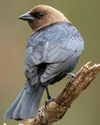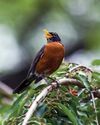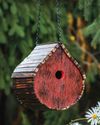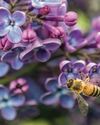
More than 150 species make up a group of native bees called mason bees, which handled pollination here long before European honeybees arrived.
“Solitary bees such as mason bees are perfectly adapted for great pollination,” says Matthew Shepherd, director of outreach and education for the Xerces Society for Invertebrate Conservation.
Unlike honeybees that gather pollen in packages on their hind legs, mason bees belly-flop into blossoms, and the pollen clings to the hairs on their bodies. As a result, they can pollinate up to 2,000 flowers per day, according to Thyra McKelvie of Rent Mason Bees in Bothell, Washington. She also notes that each mason bee can do the work of 100 honeybees. And because they're well-adapted to the climate, they fly in cooler temperatures and brave drizzly conditions.
Gentle Gardeners
The busy fliers are valuable in home gardens because they pollinate an array of early-blooming plants. Plus, they're easy to raise and fun to watch.
This story is from the February/March 2022 edition of Birds & Blooms.
Start your 7-day Magzter GOLD free trial to access thousands of curated premium stories, and 8,500+ magazines and newspapers.
Already a subscriber ? Sign In
This story is from the February/March 2022 edition of Birds & Blooms.
Start your 7-day Magzter GOLD free trial to access thousands of curated premium stories, and 8,500+ magazines and newspapers.
Already a subscriber? Sign In

Clever Cowbirds
Learn more about these birds that are infamous for letting others raise their young

Ask the Experts
Pros offer spring plant care tips and tough IDs

Rustic diy Birdhouse
Whether you're hardcore handy or an everyonce-in-a-while crafty person, you probably have a small pile of scrap wood handy. Grab your tools and turn your extra materials into any house wren's dream nest box.

THE LATEST IN Lilacs
Learn about updated varieties of this timeless classic and how to take care of them

Meet the ORIOLES
GET TO KNOW eight TYPES SEEN THROUGHOUT THE U.S. AND WHAT MAKES EACH ONE STAND OUT

CBD FOR YOUR PAIN
Everyone feels the hurt as you age, but CBD can help you deal with it

Welcome, New Blooms
Update your yard with 2024's freshest florals

Western Blues
Beckon these regional bluebirds to your yard with nest boxes and mealworms

Incredible Eggs
Fun facts about these tough yet fragile wonders

Life Well Lived
Surprising facts about bird life spans